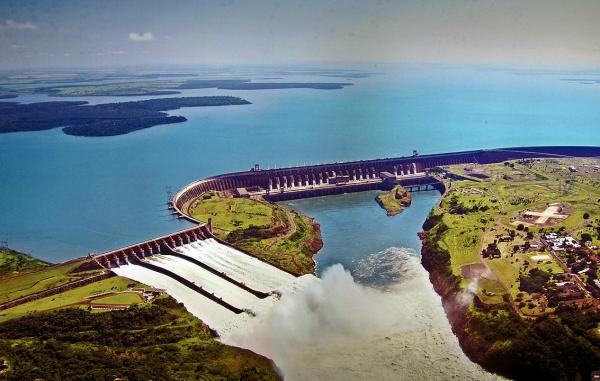Brazil Drought Threatens Electricity Supply And Crop Yields
Lowest Rainfall In 91 Years Hits Hydropower In Parana Basin
2 Jun 2021 by The Water Diplomat
Sao Paulo, Brazil

Severe drought conditions in the southeast and midwest of Brazil has led to the country's Electric Sector Monitoring Committee issuing a "water risk", while the federal government has initiated measures to avoid electricity rationing.
Meanwhile, the country's agriculture sector has issued an emergency drought alert for June to September in five states as conditions hit crop production, and scientists warn of the risk of severe fires in the Amazon rain forest and Pantanal wetlands.
The lowest rainfall in 91 years along the Parana river basin in central and southern Brazil during the 2020/2021 rainy season from November until April has left the area's hydroelectric reservoirs at their lowest levels since 2015.
With drought conditions expected to worsen through October this year, Brazil's National Electric Energy Agency (Aneel) is preparing to make up for the hydropower shortfall with thermoelectric generation plants, which means a hike in electricity prices for consumers under the country's "red flag" system.
President Jair Bolsonaro has also issued a decree regulating the contracting of "backup" power supplies via auctions to secure capacity reserves and avoid the risk of blackouts.
Hydropower accounts for two-thirds of Brazil's total energy capacity and meets more than three-quarters of electricity demand, according to the International Hydropower Association. The hydropower installations in the drought-hit area account for more than half of the country's generation capacity.
The persistent drought is also affecting corn yields, while futures prices for sugar and coffee are rising on commodities markets. Brazil is the world's largest supplier of those products.
The dry conditions in the southern part of the Amazon rain forest and Pantanal wetlands is raising fears of severe fires there. In the wake of similarly dry weather last year, both vulnerable areas suffered extensive blazes, while the northern Amazon basin suffered flooding due to heavy rain. Scientists expect these extreme patterns to worsen due to climate change.
Photo credit: Jonas de Carvalho - Flickr, CC BY-SA 2.0, https://commons.wikimedia.org/w/index.php?curid=76038827
